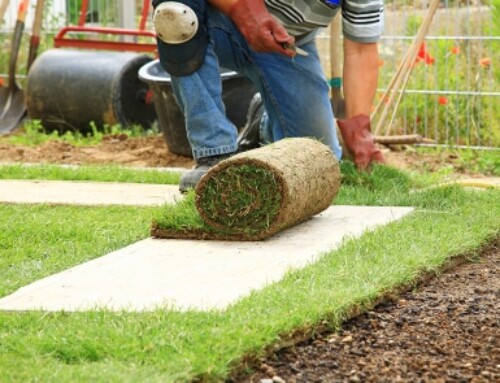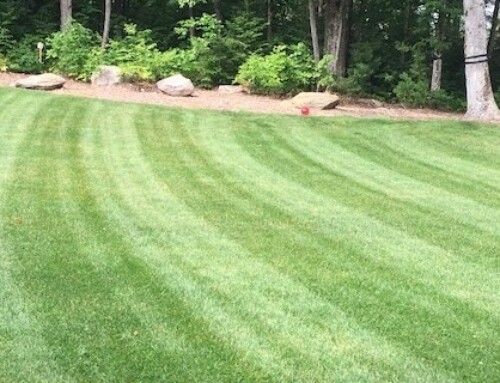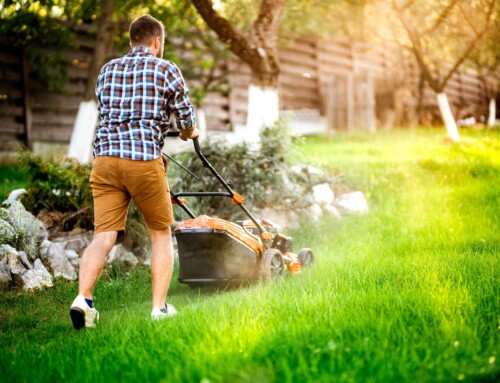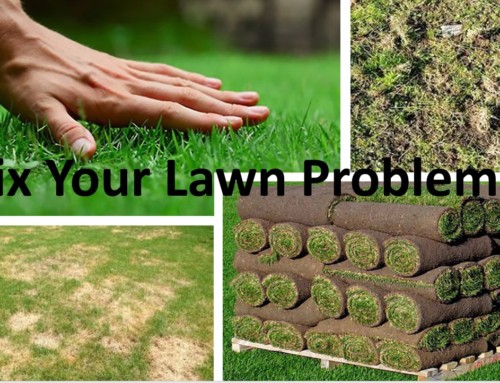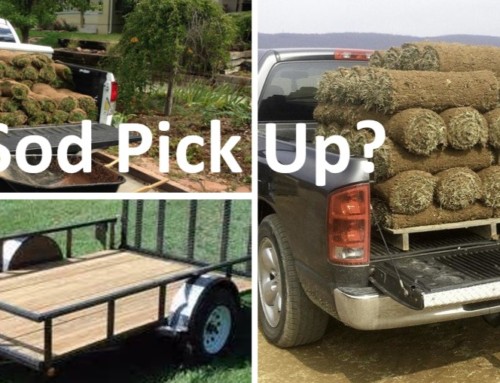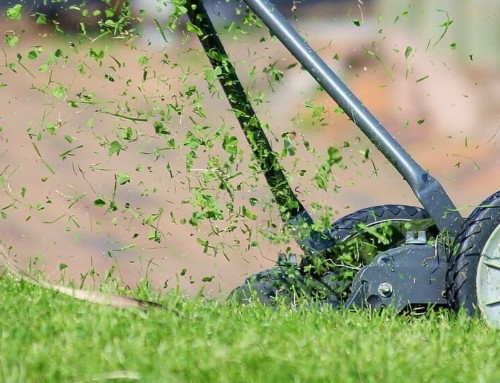Falling Foliage and Lawn Maintenance
How handling fallen leaves can enhance, or damage, your lawn
There’s something magical about watching leaves change colour and lazily float to the ground each fall. But for many homeowners, the sight of a leaf-strewn lawn is just another “to-do” on their home maintenance list. Is it really worth the effort to spend hours each fall raking, bagging, or blowing fallen leaves?
Should I Remove the Leaves from my Lawn?
As with all things, there are two sides to every question.
In nature, fallen leaves play a vital role in habitat health. Fungi, earthworms, and other organisms found naturally in healthy soil break down fallen leaves over time, releasing nutrients back into the soil for trees and other nearby plants to use.
Leaves play a similar role in man-made lawns and landscapes, but they can also be detrimental to both the health of the turf and the overall aesthetic of the lawn. A couple of the biggest problems homeowners face as the leaves begin to fall include:
- Smothered grass – In areas of heavy leaf fall grass is prevented from capturing sunlight, disrupting its ability to photosynthesize and generate food, which can lead to weakened, or patchy turf over the course of a season.
- Increased risk of pests, pathogens, and diseases – Decaying leaves trap moisture, creating an ideal environment for fungi, bacteria, and other pests to thrive.
With the advent of easy to use, commercial fertilizers it’s no longer necessary to rely on leaves to return nutrients to your lawn or landscape. So the question then becomes “how do I handle the fall?”
Keeping your Leaves
Mulching in Place
For homeowners looking to keep leaves on the property but prevent damage to the lawn, an ideal solution may be mulching them into the lawn.
Many modern mowers come with a mulching setting that is designed to cut grass and leaves into smaller pieces than typical grass cuttings. The mulch setting is great because it can typically break leaves down to dime size, with is ideal. These fragments then settle down between the blades of grass to the soil where earthworms, microbes, and other organisms break them down, releasing nutrients back into the turf organically. Mulched leaves are far less likely to smother turf or trap large amounts of moisture, making this an easy and effective way to deal with fallen leaves.
For best results, we recommend mulching fallen leaves on a regular basis, dependent on your unique leaf fall. If you live in an area with heavy leaf fall, you’ll need to mulch every few days to avoid overwhelming your mower. If you are dealing with especially dense drifts or particularly large leaves it may take several passes to achieve the desired leaf size.
Mulched leaves are far less likely to smother turf or render it susceptible to pathogens, however, smothering may still be a risk if the mulched leaf layer becomes too thick. Ideally, homeowners should be able to see at least 1/2 inch of grass over the top of the mulched leaves. Heavy spots can easily be spread by rake, but a lawn full will benefit from leaf removal.
FYI: For homeowners desiring to use an older model lawnmower that lacks a mulching setting, many hardware and home improvement stores sell mulching blades that can be swapped in. Prices will vary, so shop around!
Shifting the Drop
For homeowners who have wooded spaces or similar areas on their property, another option for keeping leaves on site is to relocate leaves into these spaces, either with leaf blowers or by raking and tarping. If spread out into a thin layer, the leaves in wooded spaces will biodegrade naturally over time, providing nutrients and promoting a biologically diverse ecosystem.
If your goal is to compost your fallen leaves, we recommend stopping by your local nursery center for tips and tricks for safe, effective composting
Removing your Leaves
Homeowners have a couple of options for removing leaves from the lawn, from DIY raking and blowing to hiring a local landscape company to do the work for them. Consider the unique factors of your fall lawn needs: density of leaf fall, fertilizing schedule, neighbourhood expectations, and then choose a solution that best suits your individual needs.
Something to keep in mind: many municipalities have an established plan for dealing with leaf debris in fall. This many be as simple as a designated place for homeowners to drop off yard waste or as handy as a curb-side pick-up on specific days throughout the season. Check with your local municipality to find out what services are available to you and plan accordingly!

